What is now so commonplace was not always so. Supercharging was used many years in advance in aviation, and it took several decades for it to make its way into mass-production cars. Initially it was a way of gaining performance, but over time it has added the function of getting more power out of engines, but to do more with less, while maintaining performance or improving it slightly.
There are three basic ways to increase power: raising the rev limit, increasing displacement or supercharging. In recent years, the third method has been the most common, as it is the most cost-effective and efficient, but with its drawbacks. Let's go step by step, so that nobody gets lost.
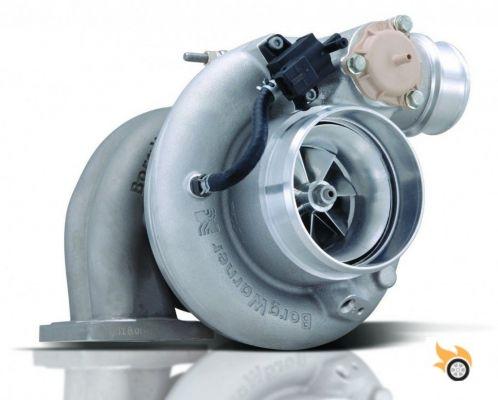
How does it work?
The engines, of "all life", were atmospheric. That means that the air they are able to digest in their cylinders comes from the simple aspiration caused by the downward stroke of their pistons, which they suck in. However, the theoretical capacity of the cylinders is not completely filled. In addition, the design of the intake is very important, the fewer obstacles and restrictions there are, the better.
Naturally aspirated engines lose performance the higher the altitude above sea level.
If we want to increase power, we have to put in more air, and that means more petrol so as not to impoverish the mixture, and therefore more power. Obviously a bigger engine swallows more air, which is why increasing displacement was an easy solution for decades. But we must also consider that the bigger an engine is, the more energy losses it suffers, the more friction and inertia its parts have to deal with, as well as the heavier it is and the more expensive it is to maintain.
A turbocharger consists of two basic parts, a turbine and a compressor. The turbine is placed in the exhaust manifold, the hot gases expelled by the engine are used to move the turbine and recover kinetic energy. The turbine starts to rotate, and transmits the rotation through a shaft to the opposite piece, the compressor. This other piece goes before the intake manifold, and with the rotation of its blades produces air compression. In the following image we see the silver compressors, the turbines are darker (the material is different, more resistant to heat).
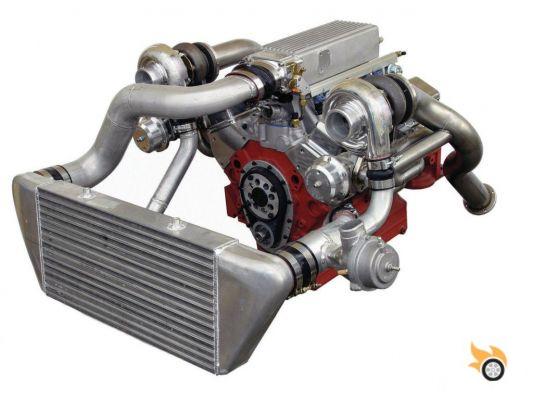
We have already solved the filling problem, but we have just created a different one. Compressing the gases increases their pressure, and therefore their temperature. Engines like air as cold as possible, as it is richer in oxygen. If the turbos heat the air, we have to try to cool it down a bit before sending it to the cylinders. This is where the heat exchanger (intercooler) comes in, which can cool the air directly or with a liquid coolant circuit.
The intake gases transfer their heat to the outside. The bigger the intercooler, the more it cools the air, the more power. That's why turbocharged cars usually have larger radiators, to cool the air more. Once the temperature problem is solved, another problem remains: what to do with all that pressurized air when the engine no longer needs it: when the throttle pedal is released, the throttle closes.
This is where the wastegate comes into action. When all that air is no longer needed, something has to be done with it. Normally it is recirculated at the start of the intake (recirculated valve), but it can also be thrown to the outside releasing a characteristic sound similar to "ptschsssss" (atmospheric valve). We are almost done, but there is another problem to solve: the response time.
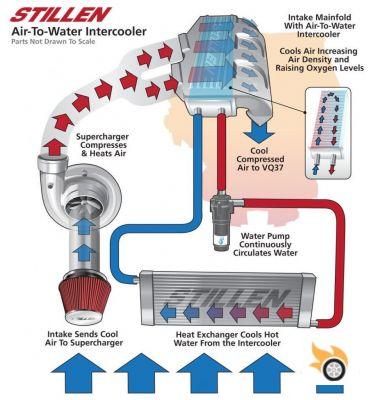
The bigger the compressor, the more air it is able to compress, but all this takes time: the mechanical parts accumulate inertia. A turbocharger can turn up to 250,000 RPM (the data is correct), so a gain of several thousand revolutions takes a few tenths of a second, or seconds, depending on the size of the shell.
A small turbocharger will have a shorter response time (lag), but will blow at lower pressure. A large turbocharger gives more pressure, but needs more time to give maximum pressure. That's why the twin turbo formula is often used in parallel (small turbos feeding half of the engine) or sequential (small turbo for low revs, big turbo for high revs). Triple turbos have also started to be used, even tetraturbo in huge engines.
In competition the ALS or "bang-bang" system is used to reduce lag, pulling fuel after the spark plug ignition.
For the engine to be progressive in its power delivery, it has to have as little lag as possible, and to increase pressure in a controlled way. The latter is achieved with electronic management and another valve, which releases excess air. The less excess that is released to the outside, the more brutal and powerful the turbo will be, but less refined. In short, the process is this.
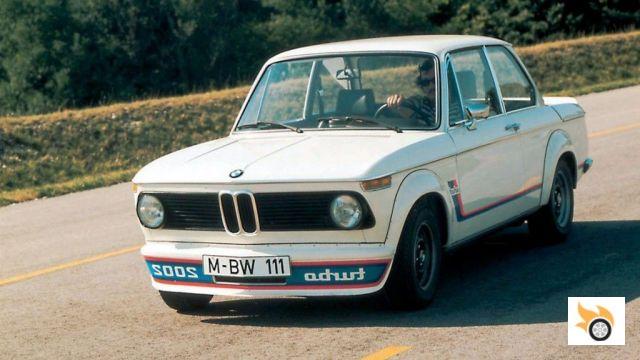
A bit of history...
General Motors was the first manufacturer to use turbochargers in mass production, in 1962 on the Oldsmobile Jetfire and Chevrolet Corvair Monza Spyder, but in terms of reliability they didn't turn out too well. They used Garrett T05 turbines in conjunction with a complex water and methanol injection system, so there were cooling problems, among others. It was too advanced for its time.
Across the pond in Germany, German engineers put a KKK turbocharger in a BMW 2002 tii (130 hp), and upped it to 170 hp, resulting in the 2002 turbo. It was a novelty at the Frankfurt Motor Show in 1973, almost at the same time that the oil crisis broke out due to the events of Yom Kippur. Although it did not have an exaggerated consumption (10.5 l/100 km) it was discontinued the following year, almost 1,700 units were produced. If you are more interested in the history of this model, I wrote an article about it years ago.
Other premium manufacturers opted for the turbocharger to gain performance, just mention the Porsche 911 3.0 Turbo (1974), the Saab 99 Turbo (1977) or the Buick Regal 3.8 V6 Turbo (1978). In the specific case of Porsche, it was the fastest series production car of its time. The new technology made its breakthrough in Formula 1 in 1977, ushering in the famous "turbo era", which lasted 12 years. Incidentally, it was Renault that was the first to do so.
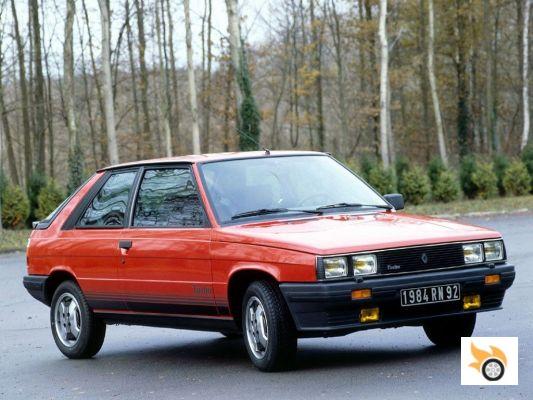
The word "turbo" used to eroticize us more.
Gradually, more and more manufacturers started to put turbochargers in their cars, once the ghost of the second oil crisis (1979) disappeared, when the revolution of the ayatollahs took place in Iran. The "turbo" badges began to appear on the back of the cars, on the front grille, side sills... as a symbol of distinction. The turbos also appeared on the most exclusive cars.
Back then, any car with the "turbo" badge was known to be cooler, or to go further. Its driving dynamics could be a complete disaster, like the Ford Fiesta RS Turbo (1990), but the driving difficulty could also be an incentive. Those early engines, without sophisticated electronic management, were more explosive and rough, and therefore more difficult to drive. And if they didn't have tyres, suspension and brakes to match, what can I tell you?
Three words will tell you a lot: Renault 5 Turbo.
The turbos were very important in the sport, just remember the monstrosities that appeared in Group B rallying in the 80s. Any video from that era is true mechanical pornography, the words "limit" and "rationality" didn't exist in the minds of the engineers. Some road cars inherited that spirit. With the advent of electronic fuel injection (EFI), naturally aspirated engines regained a lot of ground.
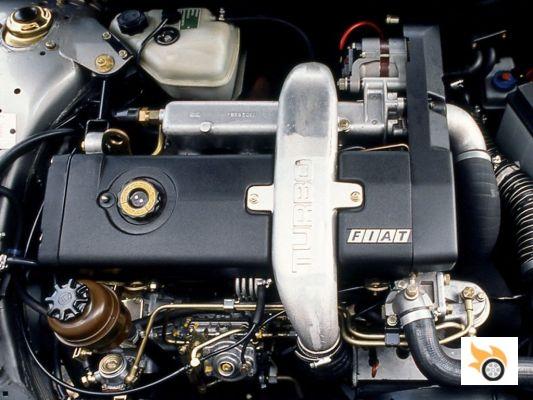
What about diesels?
A little more, and I'll forget about them. The diesels were the ugly ducklings of every range for quite a while. The diesel engine works by pure compression, the mixture burns when you squeeze it, there are no spark plugs. The naturally aspirated diesels, although very reliable, had pitiful performance. I'll give you an example, the Oldsmobile diesels of the late 70s, which produced little more than 100 hp with almost 6 litres of displacement. Their reliability was a disaster, maybe I didn't give the best example.
The Europeans, with the most expensive fuel, were pioneers in supercharging petrol cars. In 1978 the Mercedes-Benz 300SD Turbodiesel (110 hp) was launched, above the 300D. Another premium manufacturer did the same, in 1983 appeared the BMW 524td (115 hp), located above the 524d, the fastest diesel in the world. Moving down to the generalists, in 1986 the Fiat Croma Turbo D i.d (92 hp) was launched.
The first turbodiesels had low boost pressures.
Although these first petrol cars were not exactly sporty, they had a clear improvement in performance with practically identical fuel consumption. The perfect pairing with this technology came with direct diesel injection, which premiered the Fiat Croma mentioned. Three years later the Audi 100 2.5 TDI (120 hp) appeared, but few would credit Fiat with scoring the first goal. Currently a naturally aspirated diesel is inconceivable, Euro 4 sent them to ostracism.
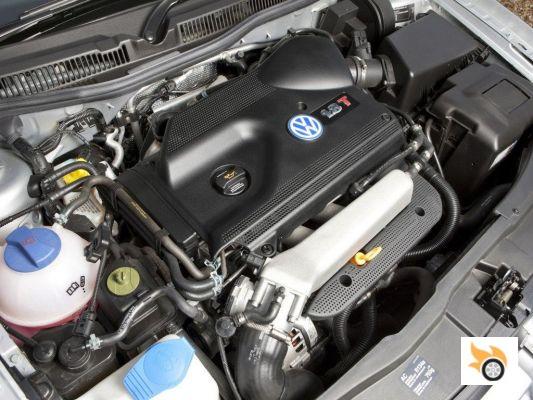
Turbochargers and ecology, the hackneyed downsizing
In petrol, naturally aspirated engines recovered a lot of ground, as they were still more reliable than supercharged engines; they were more progressive, with a consumption that was less sensitive to use, and logically more economical. Turbocharged engines have to be more reinforced, have more components, and weigh more at the same displacement. In the middle of the last decade, the use of turbochargers began to become more widespread, when diesels had overtaken naturally aspirated engines in many models.
Turbochargers not only give power, they also increase peak torque (force) for the same number of revolutions, since power = torque * RPM. Atmospheric petrols used to be dwarfed by turbodiesels in terms of peak torque, and thanks to turbochargers, the power curves started to flatten out a bit. This means that the engine asks less to change gear, and can rev to lower revs.
Furthermore, if we add good electronic management and direct fuel injection into the equation, the engine displacement can be reduced. The 2.0 Turbo became the natural replacements for the V6 and L6, and these in turn, with turbos, began to retire naturally aspirated V8s and V10s. The phenomenon, known as downsizing, has occurred from the lowest segment, all the way to the top of the range. Few manufacturers still insist on large, many-cylinder naturally aspirated engines, and they are all luxury.
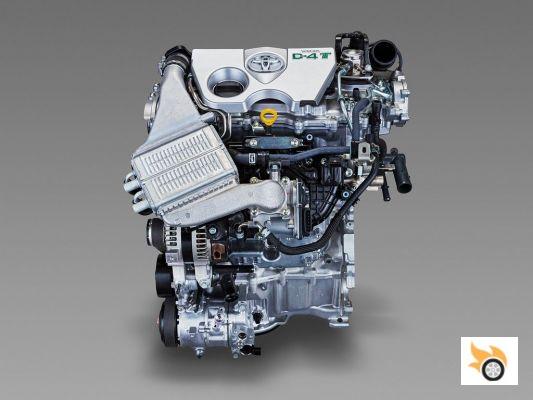
Downsizing is not just a consequence of engineering, but of legislation. Many countries tax engines based on displacement, or number of cylinders, or both. Therefore, a smaller engine may be more competitive in terms of taxation compared to an engine with the same performance. In addition, when it comes to homologation, small engines, if subjected to very low loads, have very low fuel consumption, and reduce emissions quite a lot. Another thing is to ask them big efforts.
So, with taxes, manufacturers were forced to try to do more with less. The anti-pollution regulations did the rest, small engines give less emissions in laboratories, and do not stop retiring atmospheric generation after generation. What's more, there are already customers who perceive naturally aspirated engines as a total backwardness. And that's not always true.
It is becoming increasingly common for a manufacturer to announce a range of engines in which there are no longer any naturally aspirated engines. Generalist manufacturers have all but abandoned six-cylinder engines, and a cheap car solution like the three-cylinder is taking over at an alarming rate. Is all this for the best? No.
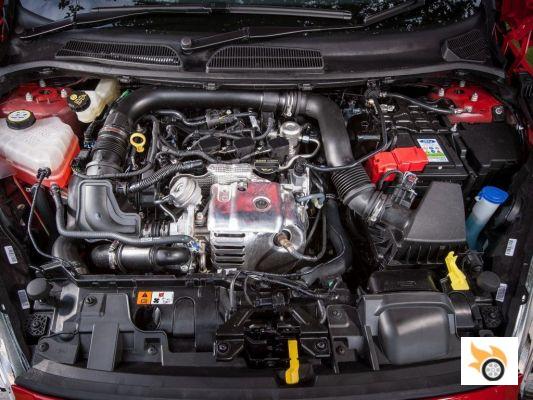
It's not always worth it
Why don't we all use turbo-raped, sub-one-litre engines with more than 100bhp/litre? Because in engineering there are limits. There are conditions in which a 125hp 1.0 turbo can consume more than a naturally aspirated 1.6 of the same power. At the end of the day, turbos increase power as much as they increase fuel consumption. A small engine, with low boost pressure, works more like a naturally aspirated engine.
Pulling a small car is not the same as pulling an SUV.
Paradoxes can also occur. Remember the 2016 Infiniti Q50 V6 Biturbo, a 3.0 ends up weighing more than a 3.7 because of the added ancillary components. Consumption is about the same, but you get more horsepower out of it. From my own experience, I have found that a 1.2 Turbo can be just as thirsty as a 3.0 Turbo, in conditions where the former engine sweats a lot (high blowing pressure), and the latter is very relaxed (low pressure). The more "atmospheric" a car is, the less it consumes.
Very few manufacturers bet on rightsizing, that is, not always bet on small displacement, the important thing is the balance, that's what gives a good result in real life and outside the laboratory. Besides, an engine is more balanced the more cylinders it has, unless you add counter-rotating solutions, which add complexity and weight. To put it another way, dress the monkey in silk, but it's still a monkey.
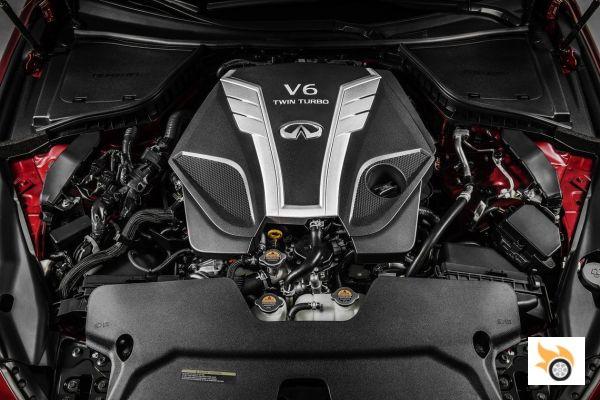
I have often cursed three-cylinder engines for the setback they represent in terms of comfort and driving pleasure. While I must point out that there are honourable exceptions, such as Opel's 1.0 SIDI, most are disappointing. The degradation from a V6 to an L4 is much less noticeable, at least both are well compensated engines. Tri-cylinders are suitable engines for small cars, but for sedans and SUVs their suitability is highly debatable.
As almost all manufacturers have wanted to cheat the homologations, they are cheating their customers. It is very easy for a turbo-charged engine to spend the same - or more - than the naturally aspirated engine it replaces, without much noticeable performance. In pure acceleration the engines will be on a par, but in recuperation the turbo always has an advantage: there is more torque. This advantage can be cancelled out with gears longer than Ben Hur with Telecinco advertising. As a result, some people go backwards.
The correct use of the gear change eliminates part of the advantage of the turbos.
In short, it is a technology that is here to stay. Japanese and American manufacturers -mainly- are the last ones to resist this invasion of turbo-charged engines. European manufacturers, as they have a master's degree in cheating homologations, are the ones who bet more on the shells. The situation will change a bit with Euro 6c (2017) and real road homologations.
I am convinced that more than one manufacturer will go back to naturally aspirated engines, when the particulate emission of gasoline is taken into account. The higher the real compression, the more particles are generated, and the very damned ones cause cancer, asthma and all kinds of diseases in large urban areas. There are many cases of engines that on paper pollute less than their predecessors, but in real life they pollute not more, but much more.
Let's see if little by little that erotic of the word "turbo" is recovered, but I see it complicated. For example, the Porsche 911 will have all its engines with turbo, so the name "Turbo" will be a little devalued. The reality is that it will be like with diesels, that before the letter "T/t" used to appear a lot on the badges, but as they are all like that, it doesn't matter; look at the dCi, HDi, CRDi, d... they don't have the "T/t" anywhere. Puta bida Tt.
I wouldn't want to come off as an anti-turbo Taliban, because I'm not. I like high performance cars, and if it has a good turbo, they make me very horny. Admittedly, a good naturally aspirated car that gets up to 8,000 RPM can be more exciting, but regulations have doomed them. Is a turbo engine good for anyone? The answer is no. In engineering you have to find the balance, then things are well done.
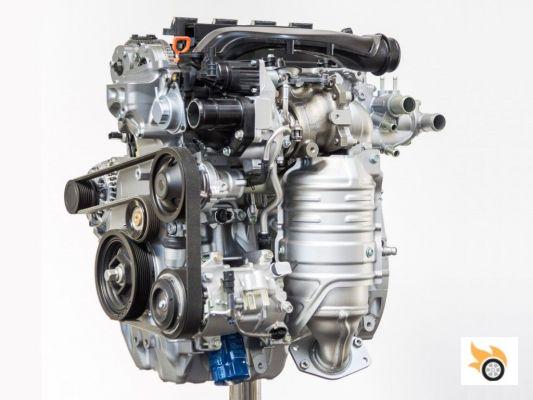
There are good engines and there are others that are an engineering abortion, and, similarly, there are atmospheric engines with asthma, and others that are the shit. I can't make up my mind, I don't know if an injection cut at 8.000 RPM or a scandalous atmospheric wastegate in a turbo engine makes me feel more orgasmic. I guess it depends a bit on the car. Both at the same time are hard to fit. A matter of taste, I guess.
Normal turbo engines can have little or no excitement, especially if after 5,000 RPM they deflate, as if they were diesels. Another thing is to take the same engine, prepared, with a turbo that blows harder and with a wastegate. The shells are usually silenced for comfort reasons, but when a noisy one comes on and we can hear the rising screech of the turbine, my friends, that's like being in heaven.
In March 2005, while the BMW 3 Series (E90) was being introduced, I asked the product manager when they would have turbo engines. My question threw him off a bit, and he told me how important it was for the brand to have good naturally aspirated engines. A year and a half later, the 3 Series Coupé (E92) was presented with the new 3.0 L6 biturbo engine (N55 N54), we met again, he told me: "We listened to you". I know it was a lie, that was approved long before, but for a few seconds, I was thrilled to have had such a good aim.
And you, what are you, atmospheric or turbo?

























